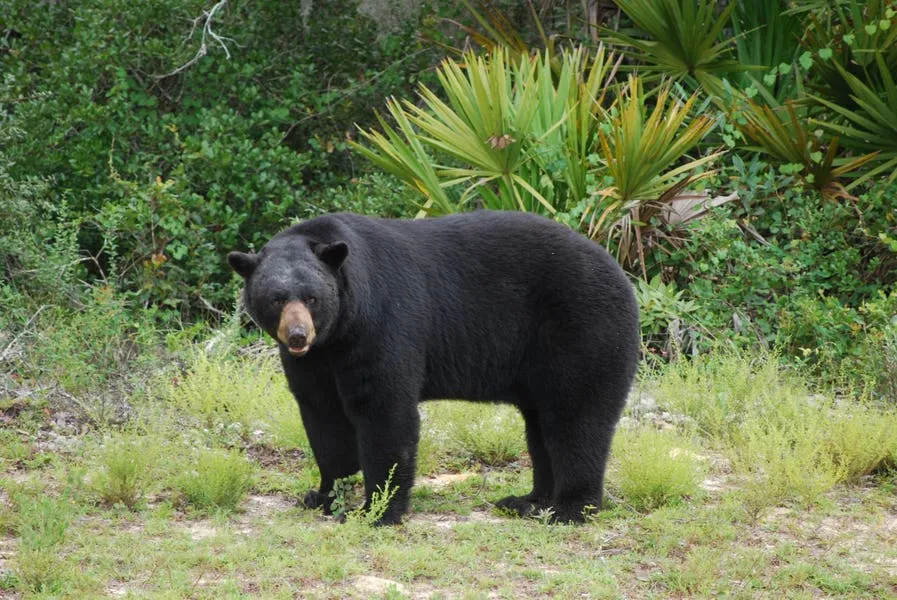Forbes contributors publish independent expert analyses and insights.
After years of bear population increases and growing numbers of human-bear conflicts, the Florida Fish and Wildlife Conservation Commission (FWC) voted 4-1 last May to open a limited bear hunt for the first time since 2015.
Not surprisingly, the proposed season has sparked a backlash from anti-hunting groups and underscores the ongoing debate in some states about who should manage wildlife: residents in largely urban centers with little to no background in wildlife issues or the professionals of state fish and wildlife agencies? While the answer may seem obvious, emotionally charged campaigns backing statewide referendums looking to close hunting seasons have clouded the role of some state fish and wildlife agencies.
Between 2002 and 2015, Florida bear populations expanded by 50 percent according to state assessments. At the same time, the black bear range grew from 17 percent of the state's landmass to more than half of it. Moreover, bear populations in Florida have risen from merely several hundred in the 1970s to more than 4,000 today.
With that has come a growing number of complaints from residents. In 2023 alone, FWC received some 3,000 calls regarding nuisance bears. While a hunting season may not address complaints in residential areas, it's likely to help alleviate conflicts in more rural counties of the state where hunting will impact both bear populations and behavior. It's not uncommon for bears that aren't hunted to become habituated to human activity, often lacking a general fear of man.
Shortly before the May FWC vote was taken, a black bear killed 89-year-old Florida resident Robert Markel and his dog near the town of Jerome -- the state's first ever black bear fatality. The FWC confirmed the attack and identified the bear, finding DNA evidence and some of Markel's remains inside the bear that was one of three animals killed by state authorities the night Markel's body was recovered. In February, another black bear attack occurred near Silver Springs, Florida, but in this instance the victim survived.
Despite the preponderance of evidence justifying a limited bear hunt -- not the least of which is public safety--animal rights groups in the state have launched campaigns to disrupt the proposed hunt. One of those groups is Speak Up Wekiva, a greater Orlando-based nonprofit that was created to oppose the state's bear hunt in 2015. The group is encouraging residents to apply for as many of the 187 available bear tags as possible.
Wekiva's website features a black bear cub on its home page with the caption, "If you love me, buy the permit that will be used to hunt me...". Never mind that no cubs nor sows with cubs are allowed to be hunted under the proposed rules. In fact, no bears under 100 pounds can be legally taken.
Moreover, the number of tags isn't random but is based on well-established black bear population models. If the target number of bears isn't taken, the state logically will up the allotment of tags. Many states issue more tags than would likely be needed to take a target number of animals, but when the quota is hit, they simply close the season to prevent taking too many animals. Apparently, that management reality is lost on Wekiva.
To further underscore the general flaw in the Wekiva ad, the greatest threat to bear cubs comes from bruins. A male bear will often kill the cubs of other bears to induce the sow to come back into estrus, the breeding cycle. While well, grisly, it is nature's way of diversifying the gene pool to guarantee survival of the fittest and, in the end, the species itself.
Kodiak Island, Alaska, for instance, is home to the highest density of brown bears in the world -- not despite the hunting that takes place there, but because of it. Hunt a limited number of mature bruins and that guarantees the survival of more cubs. In other words, the Wekiva ad featuring the cub could more accurately say, "If you love me, allow the hunt to continue."
The reality is that with an estimated 4,000 bears in the population, even if all tags were filled, it would not stop the growth of the state's bear population. Thus, the biggest question facing the FWC might simply be: what liability will they incur should they fail to enact the hunt at the request of the agency and more attacks on humans occur? Ultimately, wildlife commissions have a responsibility to all state citizens -- not simply the most vocal.
FWC employs more than 2,000 full-time fish and wildlife experts, with many possessing advanced degrees. "FWC has incredibly talented and experienced bear biologists and researchers who have provided Florida with some of, if not, the best black bear data in the country," says George Warthen, FWC Chief Conservation Officer who has been with the agency for 15 years. "This data is at the forefront of the decisions the FWC makes in managing bear populations in the state."
"The actions of Animal Rights groups often have less to do with what benefits wildlife than what it does to line their own pockets," says Jack Hubbard, Executive Director of the Washington, D.C.-based Center for Environment and Welfare. "These groups have a long history of using emotionally charged imagery and rhetoric to raise money -- often with very little evidence that the funds they raise ever do much to help animals."
Review the successes and failures of wildlife management strategies across the globe and it's difficult not to conclude that the model of hunter-funded conservation is the most viable and sustainable method that's yet to be employed. This approach came of age following the ecological calamity of the Dust Bowl of the 1930s and remains the planet's most successful conservation approach.
Ultimately, however, the question facing the FWC is simple: Follow science...or emotion?
